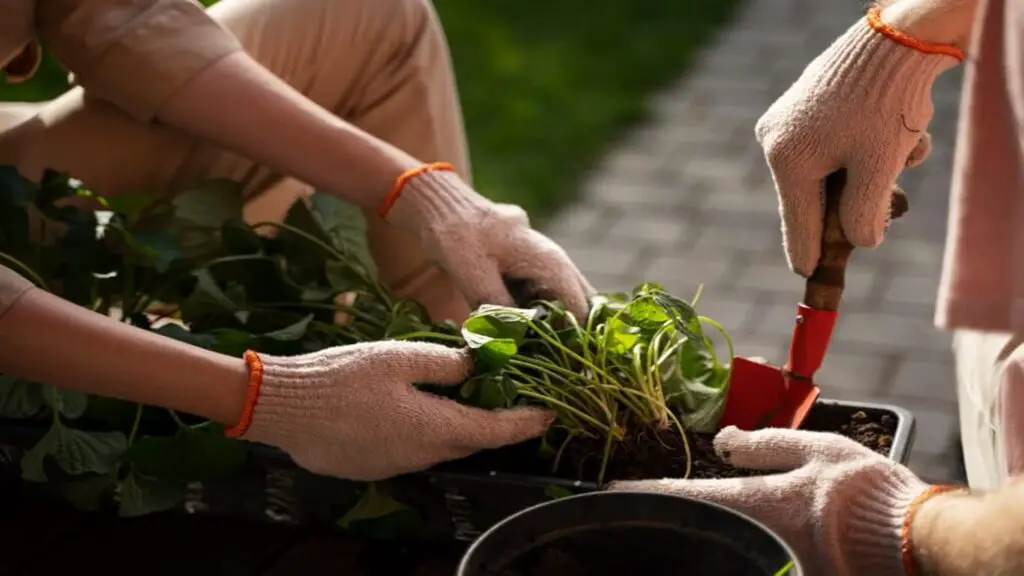Gardening is an art form, and like any lifestyle, it requires a delicate touch and a keen eye. But even the greenest thumbs can stumble without the right guidance.
For beginner gardeners, there is a lot to learn about gardening, and it is often easy to slip up somewhere along the line, whether it is getting the right plants, misunderstanding UK gardening zones, and being unaware of how to sow, plant, and harvest your crops. But do not worry, as this article will help you to understand the five most common gardening mistakes to avoid when beginning your gardening ventures.
Key points:
- Learn about the importance of giving plants enough space to prevent disease and promote growth.
- Discover how to balance watering and fertilising to avoid common issues like root rot and soil depletion.
- Uncover the mistakes in pest management and seasonal care that can set your garden back.
Gain insights into human errors that every gardener should learn about.
1. Not Keeping Your P1lants At Their Best
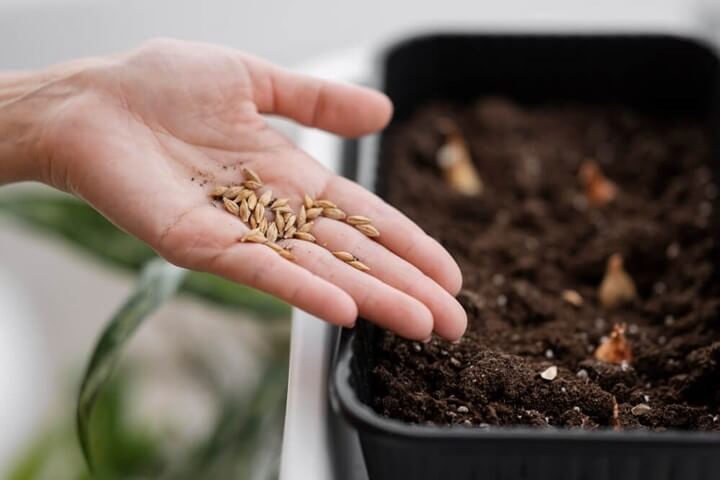
When it comes to plants, it’s not always a simple case of scattering some seeds within the soil, occasionally watering them and hoping that enough British sunlight provides photosynthesis for them. Many beginner gardeners also forget about what plants are best for pollinators, as well as beneficial plants like herbs, home growing fruit and veg (a long lasting, budget saving option compared to shop buying them)
Embrace Pollinators
Introducing wildlife to your garden will greatly benefit plant growth, and can even provide fun for the family too, such as learning how to build a bug hotel.
To turn your green space into an ideal place for pollinators, consider these plants that are known to attract these essential creatures:
- Bee balm
- Borage
- Chives
- Comfrey
- Cosmos
- Dill
- Fennel
- Lavender
- Lemon balm
- Lupine
- Marigold
- Milkweed
- Mint
- Oregano
- Pincushion flower
- Purple coneflower
- Rosemary
- Sage
- Sunflowers
- Thyme
- Verbena
- Yarrow
- Zinnias
Space Your Plants
Another common gardening mistake with plants is planting too closely. This might create a lush, compact garden initially, but it leads to competition for resources and can provoke diseases. Ensure each plant has enough room to thrive, ideally leaving about two feet of space between them. Even if you have a small garden, you should take these factors into consideration when arranging your plants. This helps reduce the risk of fungal diseases and allows for better air circulation, which is vital for plant health.
What Plants Are Right For You
While it’s tempting to try growing every plant that catches your eye, focusing on a few that you really enjoy and that suit your local climate and soil can lead to better success. A well-curated garden is easier to manage and can be equally rewarding. Narrowing your focus onto growing vibrant flowers or home grown fruits and veg will make it easier for you to manage your gardening tasks effectively (see more below).
2. Not Understanding Garden Care
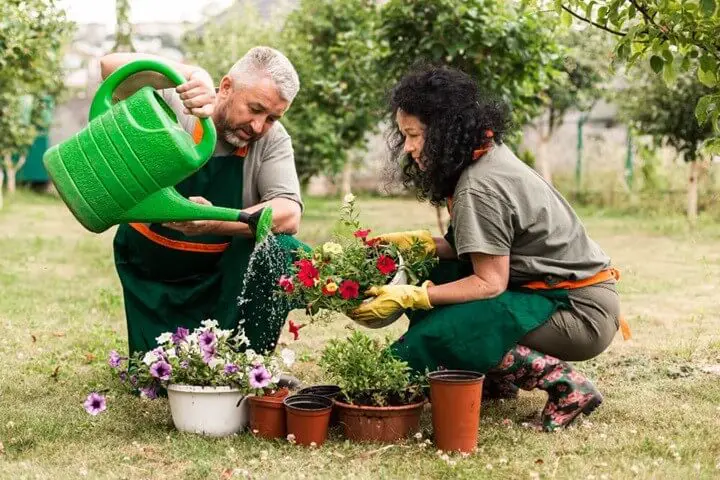
Caring for your plants can be too much of a good thing, especially with activities such as overwatering and not prioritising soil health. Here’s why you need to properly understand caring for your plants:
Water Wisely
Overwatering is a frequent issue for beginner gardeners, often leading them to the common pitfall of gardening mistakes. Not all plants have the same hydration needs; some thrive with deep, infrequent watering, while others prefer a more regular schedule. Understanding how much water each of your plants need will prevent root rot and other water-related diseases that come with overwatering.
Soil Health is Key
The enthusiasm to boost plant growth often leads to over-fertilisation. However, a heavy hand with fertiliser can disrupt the natural biological processes in the soil and harm plant health. Using organic compost can enrich the soil without the risk of over-fertilisation. It’s important to understand that many plants thrive with minimal human intervention, relying on natural processes more than chemical aids. So, often the key to garden care is letting nature take its course!
3. Not Correctly Managing Pests
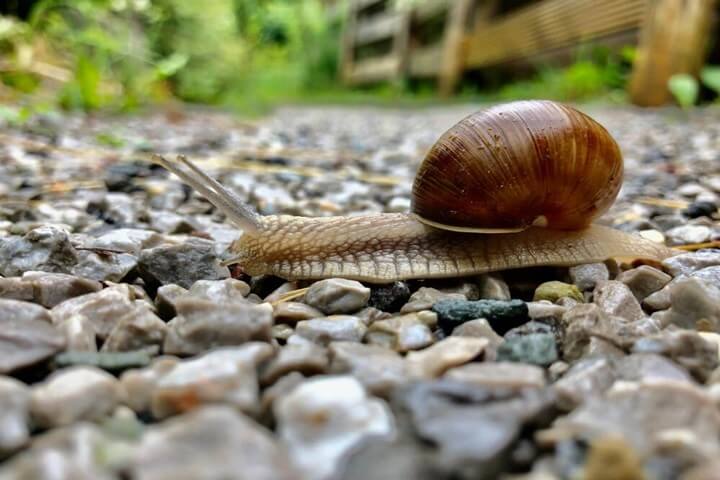
Pests can be a major problem in the garden if the right control measures are not implemented. After all, you don’t want to deal with flies and maggots attacking your crops, or other microbe diseases. However, did you know that not all insects in your garden are necessarily bad for your crops? Here are the mistakes people can make regarding pests in the garden:
Understanding Insect Life Cycles
At the first sight of pests in the garden, your first port of call may be to use pesticides, whether organic or not. However, applying pesticides should only be used when absolutely necessary, especially if you are an advocate for only using humane solutions in your garden, since pesticides can impact your plants too, and not always in a good way.
For beginner gardeners, it’s crucial to apply treatments when insects are at their most vulnerable stages, such as larvae or pupae, to break the infestation cycle effectively. For example, insecticidal soaps are best used on soft-bodied insects during their early life stages to maximise effectiveness while minimising harm to non-target species.
Mastering Weed Control
Getting rid of weeds is not a simple case of spraying homemade weed killer or pulling them out by hand. Avoid simply chopping the tops off weeds like dandelions and thistles, as this does not remove their root systems which often can be buried deeper in the earth than you can imagine.
Instead, dig deep to remove as much of the root as possible. For persistent or widespread infestations, consider using systemic herbicides that target the roots.
Preventive Measures Against Slugs
Slugs can be a significant pest in gardens, particularly in moist and shaded areas. Starting slug control early in the season can prevent them from forming greater numbers sooner. Surprisingly, you can prevent slugs using simple solutions that can be found around the house, such as by using copper tape, eggshells, or grit, and setting up beer traps. Engaging in these preventive measures as early as spring can keep slug numbers manageable, ensuring they don’t overwhelm your garden in the summer.
4. Human Error
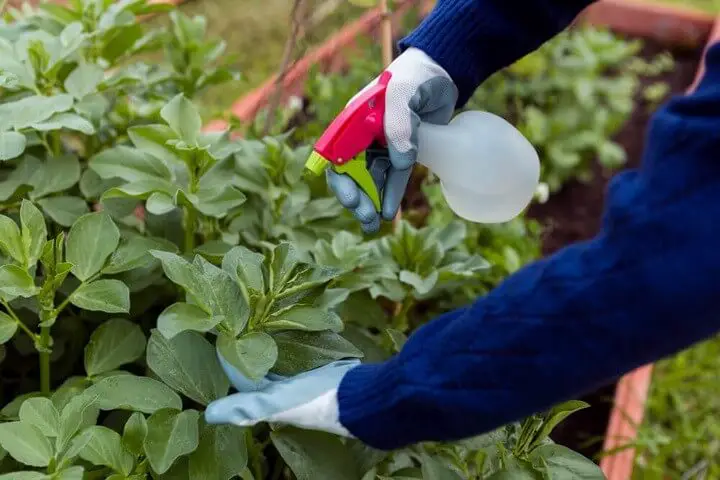
As mentioned, those that are new to gardening, making mistakes are a natural part of the learning process.
Beginner gardening often comes with its share of trials, including overwatered plants or dealing with pests. It’s common to lose plants and feel discouraged, but each setback is a stepping stone to better gardening practices. Recognising that sometimes plants just don’t survive despite your best efforts will help you to maintain your confidence with gardening.
Persistence
The key to successful gardening is persistence. Many beginner gardeners might feel dismayed after a few failures, but the secret lies in continuing to try and improve. Whether it’s accidentally cutting a plant’s taproot or dealing with pests too late, each mistake can provide a unique lesson. Instead of getting too stressed, take these experiences as opportunities to learn and grow as a gardener. Even exploring what gardening blogs that there are online can help you to expand your knowledge regarding gardening.
Resisting The Urge To Fix Everything
A common mistake beginner gardeners also make when noticing a problem with plants is to immediately try to fix it. However, beginner gardening tips often suggest a more measured approach. Before reaching for the nearest spray or fertiliser, take time to really observe what might be affecting your plants. Many issues, such as slight discolorations or minor pest problems, can resolve on their own without drastic measures.
5. Seasonal Gardening
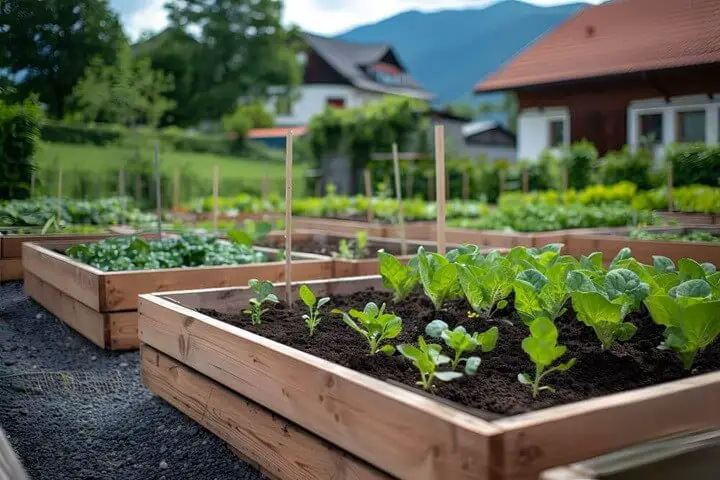
A final mistake that many beginner gardeners also make is not considering the mature size of plants. It’s crucial to understand that the small seeds that you recently purchased could grow into a large tree or bush.
To avoid future complications with space and maintenance, plan your garden layout with the growth potential of each plant in mind. Choose plant varieties that will fit comfortably in your available space when fully grown, thereby preventing overcrowding and reducing the need for costly future modifications (as seen in the plants section above).
Not Using Garden Beds Properly
Leaving garden beds empty can be a missed opportunity for optimising your garden’s health and productivity throughout each season.
Any plants that you are planning on growing will help your garden ecosystem, hence why you should utilise your garden beds to their full potential. To make the most of your gardening efforts, fill your beds with appropriate plants as soon as the soil is ready, and consider mulching to further improve soil health.
Planting In The Right Season
You should always ensure that you plant your seeds at the right time; these can be checked by reading details on the back of the packet or on a growing guide online. This practice ensures that plants have the best chance to thrive.
Vegetables and flowers have specific growing seasons, and planting them at the wrong time can lead to poor yields and wasted effort. This awareness can prevent common mistakes like planting frost-sensitive plants too early in the spring or expecting summer vegetables to survive frosts in the winter.
In conclusion, whilst gardening is a rewarding journey filled with plenty of personal learning and growth for years to come, panicking over simple mistakes that you make is not the end of the world. By making yourself familiar with overwatering, pests, specific plant care, and other tips laid out in this article, you can effectively evolve, not just your garden, but your knowledge too.
Explore the elegance and durability of teak garden furniture to complement your lush garden. Perfect for relaxing, entertaining, and more. You can also check our list of some of the best pergolas to buy.
FAQs
What’s the hardest part of gardening?
The hardest part of gardening often involves soil management, pest control, and the physical demands such as digging and weeding. Balancing these tasks, especially in changing weather conditions and across different plant needs, makes gardening challenging.
How do you know if you have a good gardener?
A good gardener demonstrates a deep understanding of plant species and their specific needs, shows attention to detail, and adapts gardening practices to local conditions effectively. They should also manage pests and diseases proactively and sustain the health and aesthetics of the garden over time.
Why do I hurt so much after gardening?
Pain after gardening typically results from the physical strain of repetitive movements and maintaining the same position for extended periods. Tasks like bending, lifting, and using hand tools can lead to muscle soreness and joint pain, especially if proper techniques and ergonomic tools are not used.

